1/ Presidential Cycle
2/ Election Years
3/ Quant Testing
4/ Component Years
5/ 1980, 2008, & 2024
Investopedia is partnering with CMT Association on this newsletter. The contents of this newsletter are for informational and educational purposes only, however, and do not constitute investing advice. The guest authors, which may sell research to investors, and may trade or hold positions in securities mentioned herein do not represent the views of CMT Association or Investopedia. Please consult a financial advisor for investment recommendations and services.
1/ Presidential Cycle
The Presidential Cycle is a four-year cycle where the US Stock Market seems to make similar returns in each of the four years. I.e. We compare all the years of the election (2020, 2016, 2012…) and the results seem to align.
The most common theory behind the cycle is that there is more spending in years leading up to a Presidential Election and that leads to Stock Market gains. Another reason is that fund managers tend to take a “wait and see” approach when there is a change in administration, so the buying pressure is lower.
Regardless, there is a general pattern that we can take advantage of if we dig in and have a look at what history has to tell us.

In Chart 1, we can see the past 70 years of the S&P 500. On the chart I have highlighted each of the cycle years. This is a great visual, but there is not much we can do with this on its own.
Instead, we can do a small quantitative analysis to determine the average returns for each of these years and also the Probability that the year will end up (positive).
Let’s look at the four years in the cycle:
Year 1: Post-Election Year
Average Return is 4.7%
Probability of a Positive Year is 56%
Year 2: Mid-Term Year
Average Return is 2.3%
Probability of a Positive Year is 65%
Year 3: The Pre-Election Year.
Average Return is 11%
Probability of a Positive Year is 88%
Year 4: Election year (we are here now!)
Average Return is 7.4%
Probability of a Positive Year is 83%
2/ Election Years
It’s always good to look inside the numbers and view what made up the average. In Chart 2, we look at all the Election years on a Seasonality Chart and we can see how the majority of Election years end with the SPX higher.
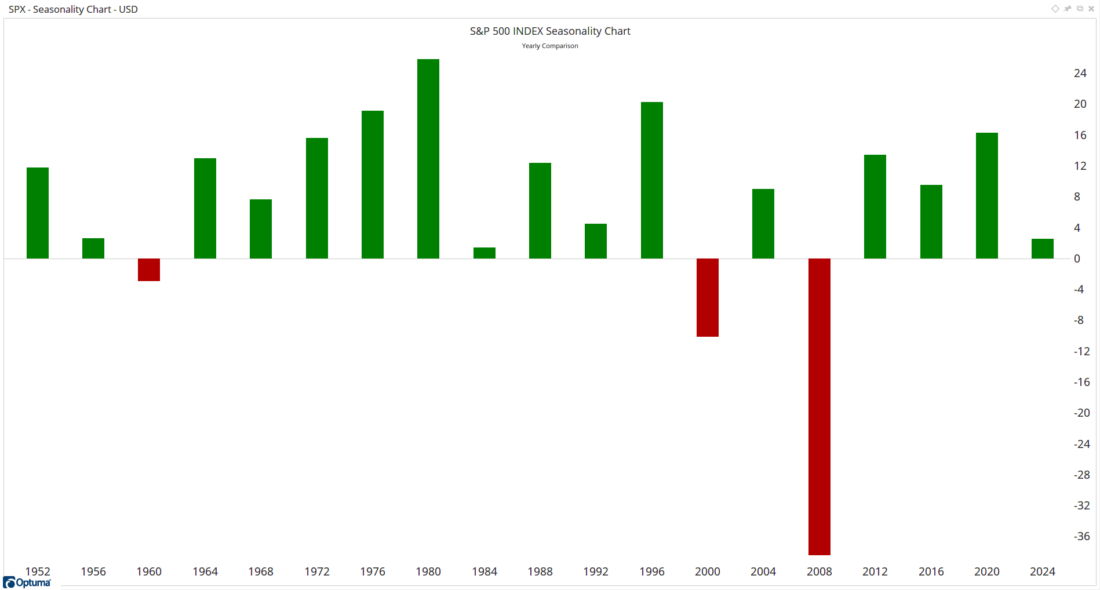

What jumps straight out is that there have only been three bad Election Years in the past 70 years. What is also interesting is those three elections saw a change in which party won the White House:
1960 : Kennedy defeated Nixon
2000 : Bush defeated Gore
2008 : Obama defeated McCain
So there are two conclusions:
- Parties continue spending in the Election Year and the Stock Market benefits from that.
- If the Stock Market does not rise, a change in the White House is highly likely.
Of course, there are many caveats with any conclusions like this. As Technical Analysts we do not observe something and assume that it is an immutable fact. Rather we see it, take note, and consider it in light of our other analysis.
3/ Quant Testing
One way that we can dig in further is to examine the average path taken during all the Election Years. Chart 3 shows an Optuma Signal Test result. The main plot is the average of each of the Election Years from the start of the year to the last trading day (252 trading days in a year).
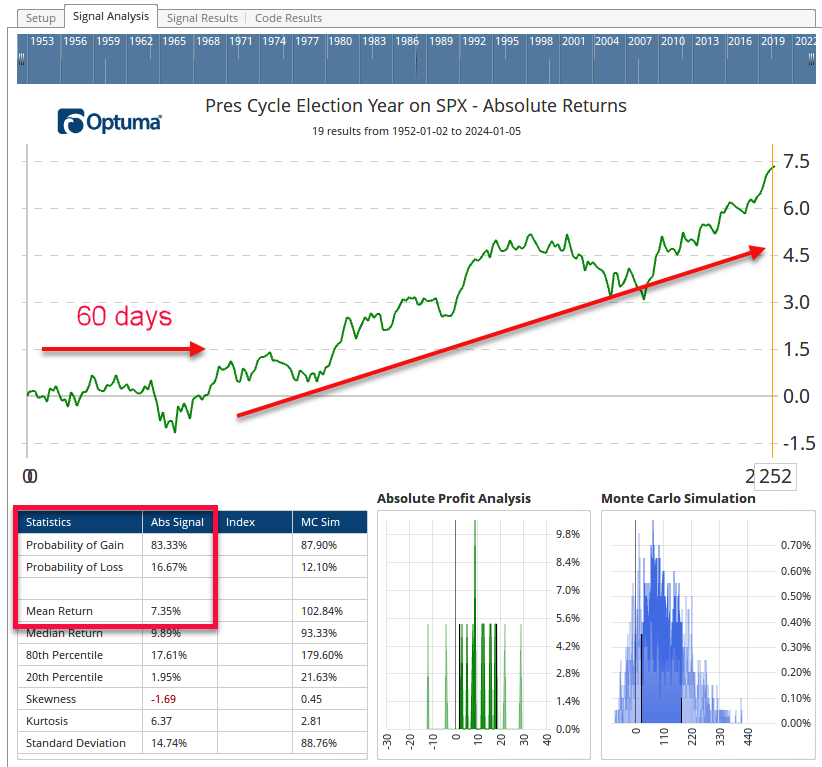

The average behavior is for the market to be sideways for the first 60 days and then start making gains until the Election is getting close. There is uncertainty about who will win and most large investors are minimizing exposure to potential volatility around the election day.
In the final 60 days, after the election until the end of the year, the certainty of what is coming gives investors the confidence to jump back into the market and we usually see a final rally into Christmas.
4/ Component Years
So far this year, the S&P 500 is up 4.6%. That’s considerably more than the average flat 60 days that we saw in Chart 3. So what can we expect from here?
To get an idea, we can have a look at the Individual Component Years in Chart 4. It’s just a different version of Chart 3 but instead of showing the combined average, we are seeing each of the years that made up the average.
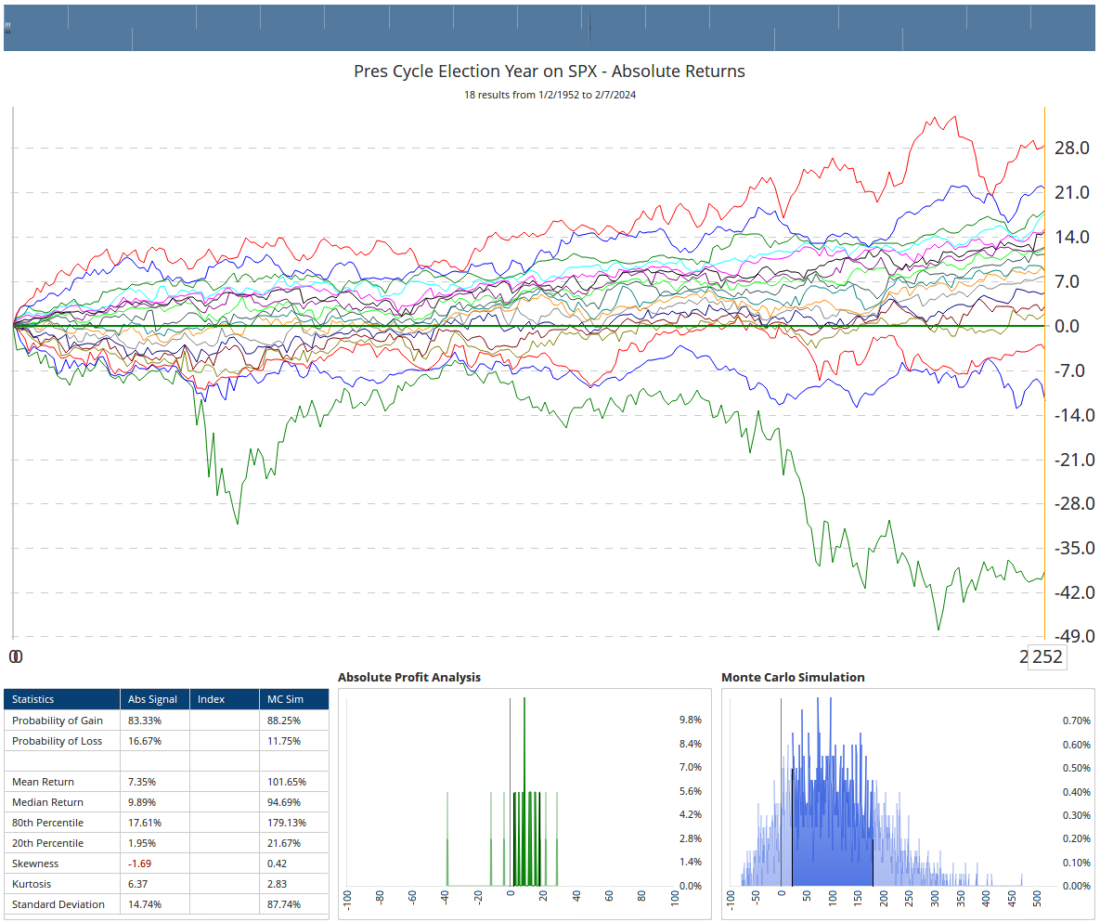

5/ 1980, 2008, & 2024
What jumps out is that those years that started well finished well. Look at the Red line in Chart 4 (1980), it was at 8.8% by this same time in the year and it finished at 28% gain. In Contrast, 2008 started down -3.5% and finished the year nearly 40% down.
I’ve repeated those two years with 2024 in Chart 5. Again, while there are no guarantees in financial analysis — we deal in probabilities based on past observations — based on the historical results, the signs are good for 2024 to finish the year strongly.
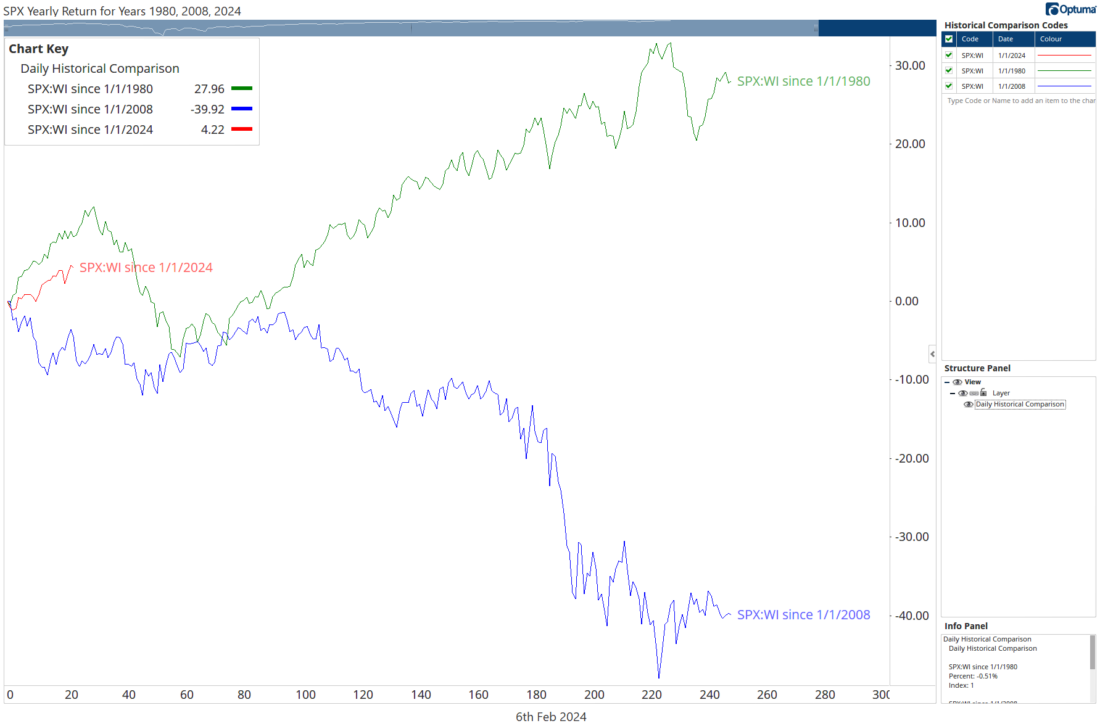

—
Originally posted February 6th 2024
Disclosure: Investopedia
Investopedia.com: The comments, opinions and analyses expressed herein are for informational purposes only and should not be considered individual investment advice or recommendations to invest in any security or to adopt any investment strategy. While we believe the information provided herein is reliable, we do not warrant its accuracy or completeness. The views and strategies described on our content may not be suitable for all investors. Because market and economic conditions are subject to rapid change, all comments, opinions and analyses contained within our content are rendered as of the date of the posting and may change without notice. The material is not intended as a complete analysis of every material fact regarding any country, region, market, industry, investment or strategy. This information is intended for US residents only.
Disclosure: Interactive Brokers
Information posted on IBKR Campus that is provided by third-parties does NOT constitute a recommendation that you should contract for the services of that third party. Third-party participants who contribute to IBKR Campus are independent of Interactive Brokers and Interactive Brokers does not make any representations or warranties concerning the services offered, their past or future performance, or the accuracy of the information provided by the third party. Past performance is no guarantee of future results.
This material is from Investopedia and is being posted with its permission. The views expressed in this material are solely those of the author and/or Investopedia and Interactive Brokers is not endorsing or recommending any investment or trading discussed in the material. This material is not and should not be construed as an offer to buy or sell any security. It should not be construed as research or investment advice or a recommendation to buy, sell or hold any security or commodity. This material does not and is not intended to take into account the particular financial conditions, investment objectives or requirements of individual customers. Before acting on this material, you should consider whether it is suitable for your particular circumstances and, as necessary, seek professional advice.


















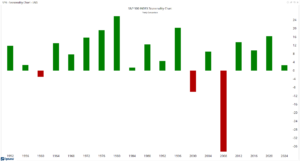







Join The Conversation
If you have a general question, it may already be covered in our FAQs. If you have an account-specific question or concern, please reach out to Client Services.